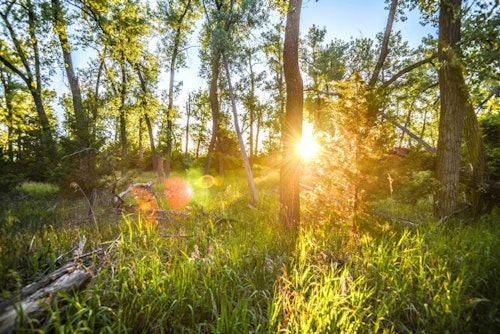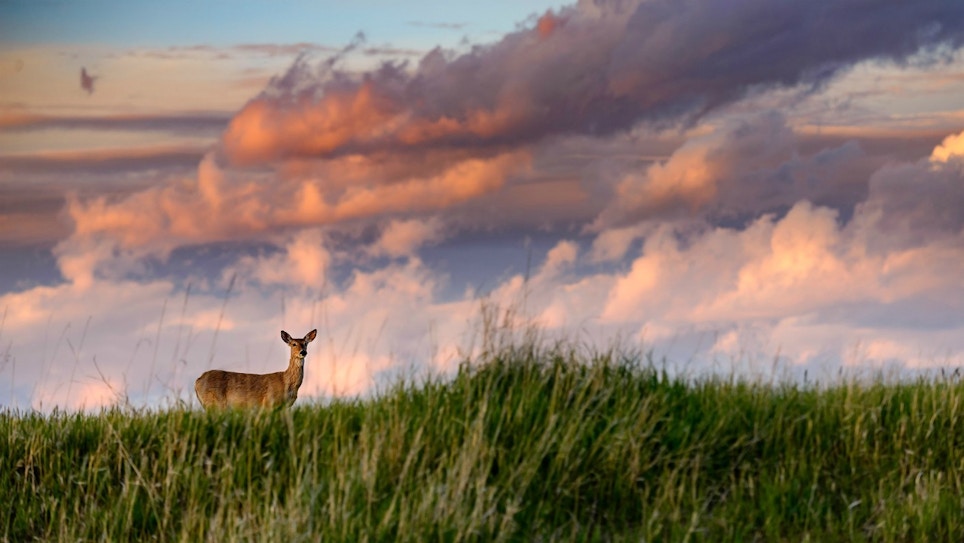Don’t misunderstand the title of this article. I am NOT advocating trespassing. What I am suggesting is checking to see whether your whitetail destination offers private hunting lands under a state-regulated access program.
For example, each fall I pursue whitetails in South Dakota with archery gear. While I spend the majority of my time on private land in which I’ve secured hunting permission, I also bowhunt private land where I didn’t have to contact a landowner. These properties are known as Walk-In Areas. Quote from the South Dakota Game, Fish and Parks website:
Walk-In Areas (WIA) are privately owned lands, operating as working farms and ranches. Walk-In Areas are leased for public hunting access by the South Dakota Department of Game, Fish and Parks using money from the sale of hunting licenses and Federal Aid money from a tax on hunting equipment sales. No further permission from landowners is needed to hunt these areas. NO DRIVING is allowed on Walk-In Areas except on designated trails and parking areas.
Landowners receive an annual payment and immunity from non-negligent liability. The Walk-In Area program began in 1988 leasing public hunting access from 26 landowners on 23,161 acres, and has grown to partnering with more than 1,400 landowners who provide public hunting access to over 1.2 million acres of private land.
South Dakota also offers private land to hunters under the Conservation Reserve Enhancement Program (CREP). Quote from the SD GFP website:
Open year round to public hunting and fishing access. CREP lands are owned by private individuals who have enrolled them in the Conservation Reserve Program (CRP) and signed a lease agreement with South Dakota Department of Game, Fish and Parks to provide public hunting and fishing access.
Administered by the USDA's Farm Service Agency, this program is a "state-sponsored" Conservation Reserve Program; providing additional undisturbed habitat for wildlife and public hunting access. In South Dakota, the focus is on improving water quality, reducing soil erosion and providing flood control while creating additional pheasant nesting habitat in the James River Watershed.
CREP participants receive higher rental rates than if they were to just enroll their land in CRP. Every acre enrolled in CREP is open to public hunting and fishing.
Finally, South Dakota offers private land to hunters under the Controlled Hunting Access Program (CHAP):
Privately owned lands, operated as working farms and ranches, leased for public hunting access by the South Dakota Department of Game, Fish and Parks primarily for big game hunting. Landowners are paid based on the number of hunters that use these lands. It is important that hunters using a CHAP area complete the required check in registration slip and drop it in the self-service box so hunter use can be properly counted. Lease payments are paid with money from hunting license sales.
CHAP is a cooperative effort between private landowners and the South Dakota Game, Fish and Parks to provide limited public hunting opportunities on private land. Landowners who enroll in CHAP have more control over hunter activities on their land; including controlling the number of hunters per day, the type of game that can be hunted, the type of seasons, the method of take (ex. archery only), and what days the CHAP is open.
Hunters are able to reserve a spot to hunt on select CHAP areas in South Dakota. As a convenience for hunters and landowners, this system allows hunters to reserve permission to hunt, up to 8 days in advance, on lands leased for public hunting access through CHAP.


How I Target South Dakota Walk-In Areas
Each year I make sure to pick up a hardcopy of The South Dakota Public Hunting Atlas. This is a hunter's guide to all lands open to public access. It includes federal- and state-owned lands, as well as private land leased for public hunting access.
The atlas contains maps and information on South Dakota's Walk-In Areas (WIAs), Game Production Areas (GPAs), Waterfowl Production Areas (WPAs), School and Public Lands, National Forests and Grasslands, Bureau of Land Management (BLM) lands and other lands open to public hunting. The atlas is printed annually and available in early August.
Whether or not you obtain a printed copy, I highly recommend checking out the online version and its most recent updates by clicking here. This version works well because it not only shows property boundaries for the various lands, but the properties are overlaid on an aerial photo so you can see farm fields, swamps, shelterbelts, etc.
Specifically, I look for WIAs located near prime private whitetail property that is NOT enrolled in the hunting program. Whitetails have fairly large home ranges in South Dakota, and bucks roam widely during the rut, so I know that deer living on these unhuntable private tracts (at least to me) will spend some time visiting nearby WIAs. Depending on acreage and available bedding cover, the WIAs will be home to some whitetails, but during the rut, you can bet that bucks will be playing dot-to-dot from woodlot to woodlot across the prairie. With a bit of online scouting and then boots-on-the-ground visits, it’s fairly straightforward to plan an ambush.

Note: You can place portable treestands on these leased private lands in South Dakota, as well as public lands, provided the stands don’t harm the trees. Check the regs in your state for specifics on dates, etc. You can’t leave them up year-round in South Dakota, and if I leave a treestand unattended (overnight means unattended), then I have to leave specific identification info on the stand. Again, read the rules for your state.
Because it’s often a hassle to place treestands on WIA lands, I typically hunt from the ground using natural cover for concealment. I simply hide in tall grasses, cattail swamps and thick shelterbelt brush. It works great, and I’m not leaving behind a calling card to other bowhunters that “this is a hotspot.”
Another reason I prefer a ground ambush is South Dakota whitetails regularly walk directly under the few trees available on the prairie when traveling from point A to point B. They often scrape under these trees. It does me no good as a bowhunter to have a mature buck directly under my treestand because he’ll smell me, and if he doesn’t, straight down is a poor shot angle. I’d rather be hiding/sitting in the grass or cattails 10-20 yards downwind and shooting back toward the tree. When the buck stops to scrape the ground or work an overhead branch, my arrow is on its way.
This fall I encourage you to explore private lands that are open to public hunting in your state. With a bit of effort, you can add a significant amount of prime, private whitetail property to your inventory. For me, it’s been a great way to spread out my hunting pressure. I leave my best private land — areas I asked for permission, or pay a trespass fee — for when conditions are ideal, and don’t mind pushing the envelope a bit on WIAs. This one/two punch has worked well for me in the past, and I think it’ll do the same for you.







